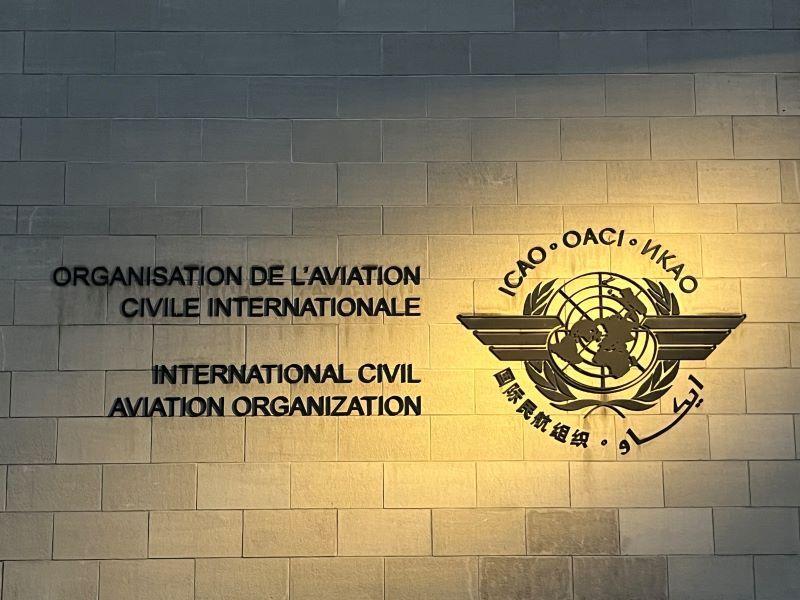
Airlines and airports are welcoming the adoption of a much-anticipated global framework on sustainable aviation fuels (SAF), saying it should help boost SAF production and reduce the aviation industry’s environmental impact.
The agreement, reached at the International Civil Aviation Organization’s (ICAO) Third Conference on Aviation Alternative Fuels (CAAF/3) in Dubai, includes a global framework on cleaner energies aiming to promote SAF production around the world.
“To support the achievement of the LTAG [2050 Long-Term Aspirational Goal of net zero carbon emissions agreed to by ICAO members in 2022], ICAO and its member states strive to achieve a collective global aspirational vision to reduce CO2 emissions in international aviation by 5% by 2030 through the use of SAF, LCAF [lower carbon aviation fuels, defined as fossil fuels that meet CORSIA sustainability criteria] and other aviation cleaner energies (compared to zero cleaner energy use),” the ICAO agreement said, which was reached by policymakers from over 100 ICAO member states.
Critical SAF Role
“The aim is that aviation fuel in 2030 is 5% less carbon intensive than fossil fuel used today by the industry,” IATA said.
“The goal is maximizing SAF production everywhere with positive, not punitive, policy measures,” said Marie Owens Thomsen, IATA chief economist and SVP of sustainability. “Airlines are ready with open arms to catch the resulting SAF production. CAAF/3 has again made it clear that aviation’s decarbonization will require the wholehearted and united efforts of the entire value chain and governments as we all focus on net zero by 2050. To be perfectly clear, where government money leads, private money will follow.”
In its own statement on the agreement, ICAO reiterated that while SAF, LCAF and other aviation cleaner energies are likely to have the biggest impact on reducing aviation emissions by 2050, and there are growing initiatives to boost their production, they remain a tiny fraction for the moment, making up only around 0.2% of all aviation fuel use.
“We need to see governments acting on the CAAF/3 declaration with policies that expand SAF production in all its shapes and forms,” IATA Director General Willie Walsh said. “Despite unequivocal demand signals, the SAF production market is not developing fast enough.”
‘Visionary’ Agreement
Airports Council International (ACI) World director general Luis Felipe de Oliveira hailed the agreement, saying, “ACI applauds and supports the visionary ICAO goal for 5% carbon intensity reduction by 2030.”
The agreement will be crucial to reaching the LTAG, he added. “We look forward to continuing to foster consensus across regulators and industry at the upcoming COP28,” de Oliveira said, referring to the 2023 United Nations Climate Change Conference, to be held in Dubai Nov. 30-Dec. 12.
European industry bodies Airlines For Europe (A4E), ACI Europe, European Regions Airline Association (ERA), and CANSO Europe also jointly described the agreement as an important step on the journey to net zero. “SAFs are a crucial component of aviation’s pathway to climate neutrality,” they said, adding, “Destination 2050 partners in particular applaud the inclusion of a 5% CO2 emissions reduction objective by 2030 through SAF use globally, which will provide a clear signal for the energy sector to develop alternative fuels and attract the necessary investment.”
The ICAO agreement acknowledged that some states have the capacity to progress to greater SAF production faster than others: “In pursuing this vision, each state’s special circumstances and respective capabilities will inform the ability of each state to contribute to the vision within its own national time frame, without attributing specific obligations or commitments in the form of emissions reduction goals to individual states.”
Haldane Dodd, executive director of the cross-industry Air Transport Action Group said that was an important part of the agreement. “A global average goal allows some parts of the world to move fast and develop their existing base of SAF deployment whilst leaving room for other states to build up the capabilities needed for SAF production and use,” Dodd said. “This agreement sends a signal to the world that aviation is shifting away from fossil fuels and the traditional energy sector needs to commit meaningful flows of their vast profits and capital expenditures towards the energy transition, now. We need supportive government policies and supportive investment from the finance sector.”
COP28 Focus
The agreement was reached just days before the COP28 United Nations Climate Change Conference gets underway.
However, although the aviation industry is counting heavily on SAF to meet its climate goals, SAF announcements in the run-up to COP28 have drawn criticism from environmental campaigners.
“The aviation sector’s current attempts to promote ‘sustainable’ flights is a greenwashing distraction from the urgent need to reduce flights,” said Magdalena Heuwieser from the Stay Grounded network, which campaigns for a reduction in flying.
Virgin Atlantic plans to fly a 100% SAF transatlantic flight on Nov. 28. “While public focus is on this one seemingly green flight, there are 100,000 daily flights using fossil fuels,” Heuwieser said. “Fuel substitutes are only a tiny drop in a fossil fuel ocean. They are nowhere close to being scalable in the necessary time frame to avoid climate collapse. What is urgently needed is to reduce the burning of fossil jet fuels, which means reducing flights wherever possible.”
Other airlines have been highlighting their SAF progress in recent days, such as Emirates operation of an Airbus A380 demonstration flight earlier in November with one engine powered by 100% SAF.
Reducing aviation’s environmental impact will be particularly in focus Dec. 6 when the European Commission holds an EU transport day at COP28.
Boosting Investment
The ICAO delegates also reached agreement on capacity building, a “Finvest Hub,” and voluntary technology transfer.
“ICAO and its member states will work together to strive to achieve a vision of implementing the elements of this global framework in order to globally scale-up the development and deployment for SAF, LCAF, and other aviation cleaner energies, as such fuels are expected to have the largest contribution to aviation CO2 emissions reductions in the ‘basket of measures’ to achieve the LTAG,” ICAO said in the agreement.
The Finvest Hub could contribute in several ways, including by developing a platform to connect aviation decarbonization projects with potential public and private investors. These would include a “matchmaking” function to help investors find and assess projects; working with various stakeholders to explore innovative funding; collaborating with organizations such as development banks to create funding pathways for projects; developing a database of funding and financing sources; and developing a toolkit of term sheets templates or basic conditions to satisfy investors for SAF, ICAO said.

